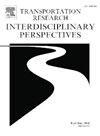算法与调查回应:比较智能旅行和移动调查与网络日记
IF 3.9
Q2 TRANSPORTATION
Transportation Research Interdisciplinary Perspectives
Pub Date : 2025-05-01
DOI:10.1016/j.trip.2025.101436
引用次数: 0
摘要
智能调查旨在减轻响应负担,提高数据质量。本文分析了智能旅行调查收集的数据与传统网络日记的响应相匹配的程度。为此,使用旅行应用程序收集旅行和运动行为数据,并通过不同的算法进行分类。受访者必须在网络日记中填写相同的信息,用于评估基于算法的输出。使用不同的应用程序算法,并分析受访者与应用程序的互动对数据质量的影响。结果表明,在对运动周期和静止周期进行分类时,基于算法的结果与网响应具有可比性。对于使用的运输方式信息,web响应与app中手动添加的信息匹配度较差。此外,研究结果表明,受访者互动对于提高智能调查数据质量至关重要。该研究显示了算法输入参数的选择是多么重要,以及智能出行调查需要什么样的技术灵活性才能准确地测量出行和运动行为。本文章由计算机程序翻译,如有差异,请以英文原文为准。
Algorithms versus survey response: Comparing a smart travel and mobility survey with a web diary
Smart surveys are intended to reduce response burden and increase data quality. This paper analyzes the extent to which the data collected with a smart travel survey matches the responses to a conventional web diary. For this purpose, travel and movement behavior data was collected with a travel app and classified by different algorithms. The respondents had to fill out the same information in a web diary, which is used to evaluate the algorithm-based output. Different app algorithms were used, and the impact of respondent interaction with the app on data quality was analyzed. The results show that the algorithm-based results and the web response are comparable when classifying periods of movement and stationary. Regarding the information on the mode of transport used, the match between the web response and the manual-added information in the app is poorer. Moreover, results show that respondent interaction is essential in improving smart survey data quality. This study shows how important the choice of the input parameters of the algorithms is and what technical flexibility smart travel surveys require to measure travel and movement behavior accurately.
求助全文
通过发布文献求助,成功后即可免费获取论文全文。
去求助
来源期刊

Transportation Research Interdisciplinary Perspectives
Engineering-Automotive Engineering
CiteScore
12.90
自引率
0.00%
发文量
185
审稿时长
22 weeks
 求助内容:
求助内容: 应助结果提醒方式:
应助结果提醒方式:


